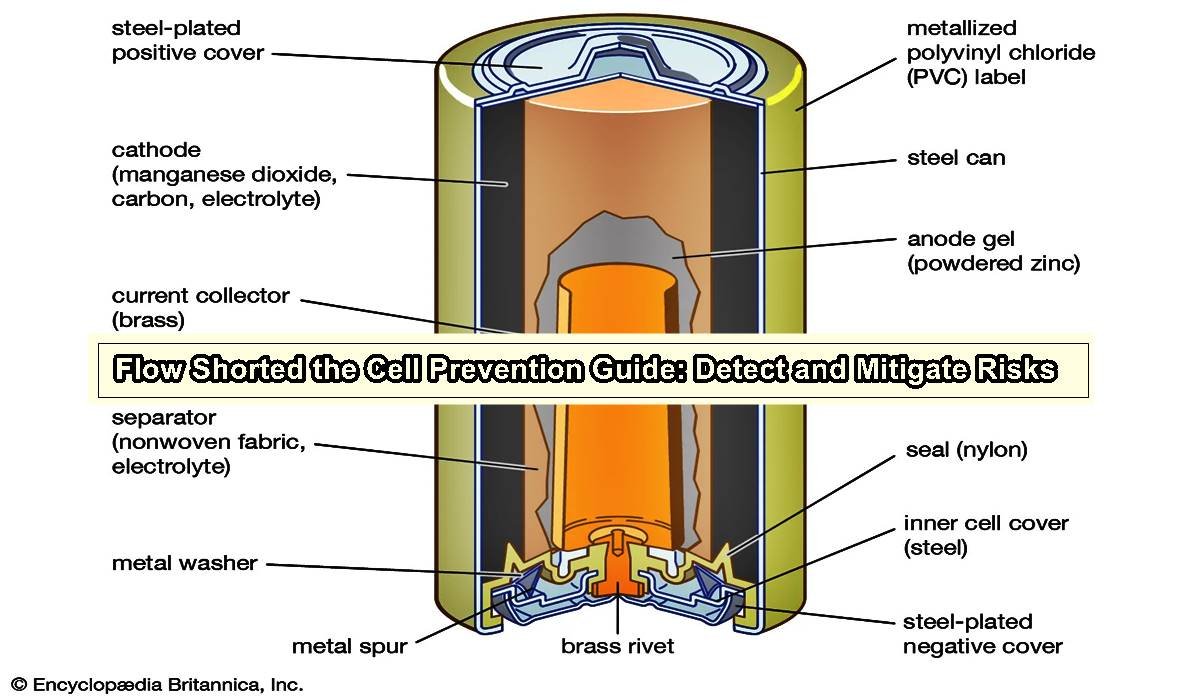Flow shorted the cell constitute a critical concept in electrical engineering, serving as unintended pathways that enable high-voltage electrical energy to bypass circuits designed for specific purposes in battery technology. Although technically grounded, this concept bears significant implications for various applications, ranging from electrical systems in domestic and commercial settings to the rapidly expanding electric automobile industry. Understanding the reasons, effects, and solutions related to flow-shorted cells is imperative for ensuring these technologies’ safety, efficiency, and long-term viability.
Flow-Shorted Cells: An Overview
Definition and Impact
Flow-shorted cells occur when an accidental electrical connection forms between two circuit points, leading to an unbalanced current flow. This issue significantly impacts both domestic and commercial applications in electrical engineering. In energy systems like photovoltaics, a shorted cell can diminish efficiency and cause irreversible damage to electrical machinery.
Parameters to Consider
Understanding flow-shorted cells involves considering crucial parameters such as short-circuit current (ISC) and the maximum power point tracker (MPPT). Short-circuit voltage represents the maximum possible current flowing across a solar panel with no substantial voltage drops. When a cell experiences a short during a flow incident, the ISC may increase, resulting in excessive current, heat, and potential damage.
Causes of Flow-Shorted Cells
Manufacturing Defects
The primary cause of flow-shorted cells in battery technology is manufacturing flaws, particularly in lithium-ion batteries. If untreated, metal particles or contaminants in cells can damage the separator, creating an unintentional pathway for electricity.
Overcharging
Lithium-ion batteries, prone to overcharging, may experience flow shorting due to increased temperature and pressure inside the cell. Overcharging can lead to separation failure or the development of lithium-metal dendrites, causing inner short circuits.
Physical Damage
Physical damage from accidents or nail penetration can compromise battery integrity, resulting in flow-shortened cells and electrolyte leakage.
Effects and Potential Dangers
Heating and Overheating
Flow-shorted cells contribute to increased heat production in batteries, potentially causing overheating. Excess heat can lead to decreased battery performance and longevity and an elevated risk of thermal leakage.
Physical Deformation and Damage
Flow-shorted cells may cause physical damage and deformation to batteries, affecting their overall performance. In extreme cases, deformation may lead to casing rupture and the release of harmful substances.
Electrical Fires
The risk of electrical fires rises with flow-shortened cells due to high temperatures and potential harm to the battery. Properly implemented safety measures, such as ventilation systems and battery management, are essential to reduce the risk of electrical fires.
Detection and Diagnosis
Visual Inspection
One method to identify a shorted cell is through visual inspection, searching for apparent signs of damage in connections, components, and wiring. However, complex electrical systems require additional evaluation.
Finding Short Circuits
Multimeters and other testing tools can detect voltage, current, and resistance anomalies, identifying areas where short circuits could occur. Diagnostic methods like circuit tracers or thermal imaging further aid in isolating and revealing the problem’s cause.
Prevention and Mitigation
Regular Maintenance
Ensuring regular maintenance, including periodic inspections, frequent testing, and proper electrolyte levels, is crucial for preventing and reducing the effects of flow-shorted cells.
Isolation and Safety Measures
Implementing safety measures and isolation, such as circuit breakers, fuses, and temperature-monitoring systems, enhances the security of a battery system.
Battery Replacement
Regularly replacing the battery according to recommended intervals and monitoring its performance is vital to avoiding cell-cell flow shorts and maintaining an efficient battery system.
Implications for Electric Vehicles (EVs)
Improvements in Safety
Flow-shorted cells can positively impact electric vehicle (EV) safety by reducing the risk of thermal runaway, thereby enhancing the overall safety of the EV experience.
Effects on Performance and Efficiency
A balanced distribution of the battery’s current through flow-shorted cells can prevent performance degradation, extend battery life, and reduce maintenance and replacement costs.
Market Implications
As the demand for electric batteries expands, reaching a projected 4,500 gigawatt-hours per year by 2030, studying new technologies like flow-shorted cells becomes crucial for ensuring security, efficiency, and long-term sustainability.
Conclusion
Understanding and addressing the issue of flow-shorted cells in battery technology is crucial for ensuring electrical devices’ safety, reliability, and efficacy. By focusing on detection, prevention, and mitigation techniques and leveraging advancements in technology like flow-shorted cells, the industry can overcome challenges and create an environmentally sustainable future, particularly in the dynamic electric automobile market.
FAQs
Q1. What is a flow-shorted cell in battery technology?
A flow-shorted cell refers to an unintended electrical connection between two points in a circuit, resulting in abnormal current flow. This phenomenon can significantly affect safety, efficiency, and overall system performance in battery technology.
Q2. What are the main causes of flow-shorted cells in batteries?
Flow-shorted cells can result from various factors, including manufacturing defects, overcharging, and physical damage. These issues can compromise battery integrity, leading to unintended electrical pathways.
Q3. How can flow-shorted cells impact the safety of electric vehicles (EVs)?
Flow-shorted cells can improve EV safety by reducing risks like thermal runaway. Balancing current distribution within the battery can prevent performance degradation and contribute to a safer EV experience.
Q4. What are the potential dangers associated with flow-shorted cells?
Potential dangers include increased heat generation, overheating, physical damage, and the risk of electrical fires. Adequate safety measures are crucial to mitigate these dangers.
Q5. How can flow-shorted cells be detected and diagnosed in battery systems?
Detection methods include visual inspections for visible signs of damage and testing tools like multimeters. Additional techniques, such as thermal imaging and circuit tracers, can further isolate and identify short circuits, allowing timely intervention and maintenance.
